|
|
 |
The Pro Shop |  |

NEW: Buy 2 items (or
more) and get a free
upgrade to 1st Class
UK postage.
Gordian Knot
Limited Edition (125)
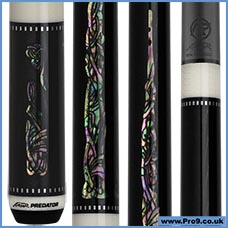
Katana 1 KATXS1
Performance Shaft
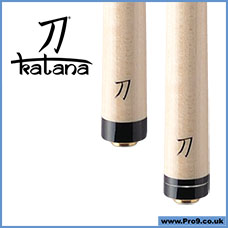
Cue Duo
Back in stock!
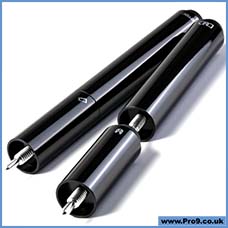
Spirit Level
Table Fitter Precision
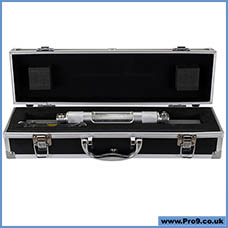
Multi Scuff
Tip shaper tool
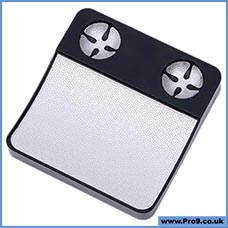
Cuetec AVID
SURGE Break Shaft
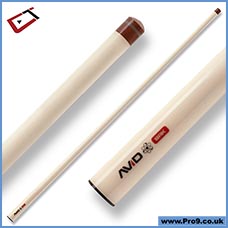
Predator
P3 Aura
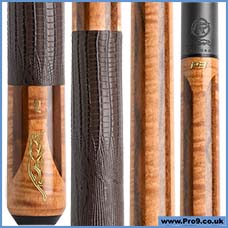
Cue Silk
Shaft Polish
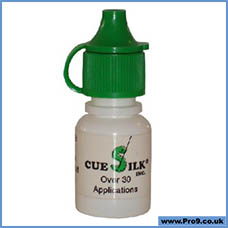
Sil Kleen
Shaft Cleaner
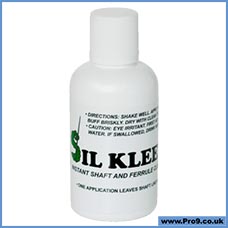
Predator LE
Double Butterfly
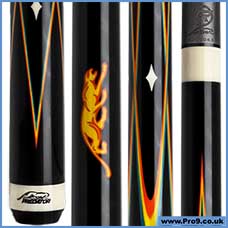
Zan Jump/Break
Double Face
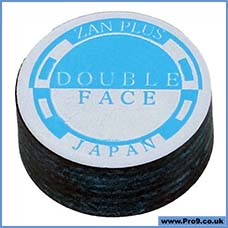
Cuetec Pro Line
3x5 Hard Case
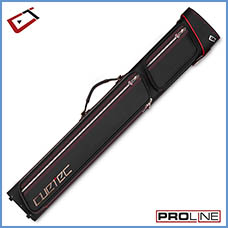
Mezz AD-3
Sorry - Sold Out!

Aramith BLACK
Alternate 5 & 13
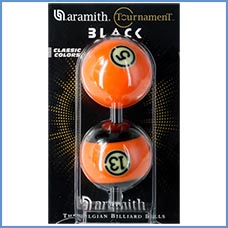
Jacoby
Monster Crush

Caiden
Fighter Tips
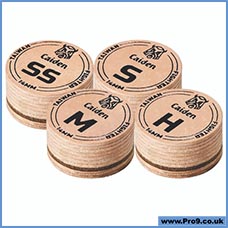
Abrado
by Longoni
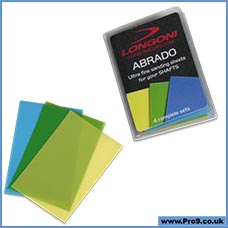
Triple 60
Hyper Jump Carbon

Silver Cup
Billiard Talc
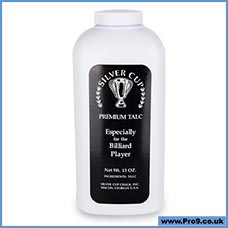
Tiger
Pro Series Glove
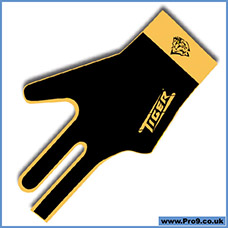
Predator Urbain
Full Houndstooth
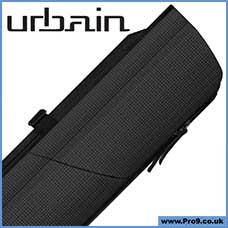
Replacement Parts
Dynamic II and III
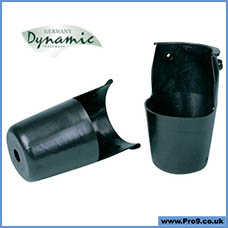
Vanquish Mach 1
Carbon Break Cue
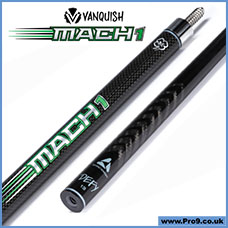
Predator Roadline
30th Anniversary Gold

Predator Roadline
30th Anniversary Gold
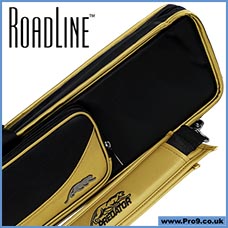
KODA
Slip-on Rest Head
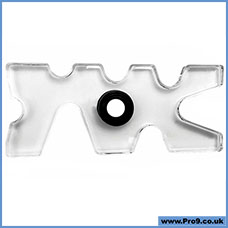
McDermott Cases
Replacement Strap
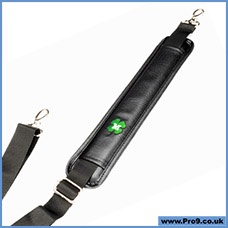
Predator SP2
Purple Metallic
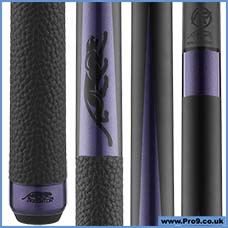
Z9 Cloth
Ocean Blue/Titan Grey
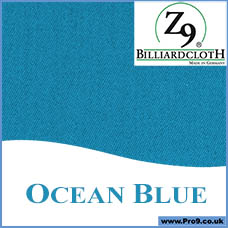
Jacoby
Monster Crush
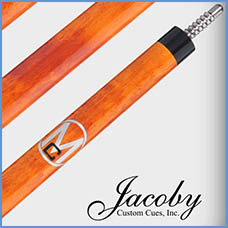
Ko Brothers
Billiard Chalk
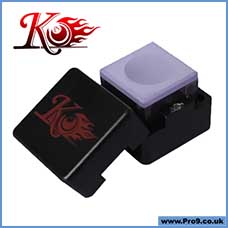
Predator Legacy
2x4 & 3x5 Cases
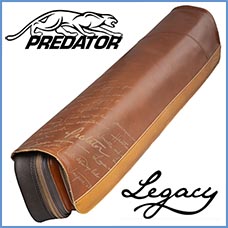
Predator Legacy
Limited - Order Now!
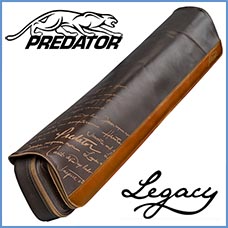
Ko Cue Tips
Made In Japan
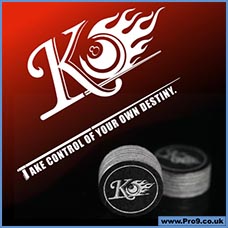
Bounty Hunter
10 in 1 Repair Kit
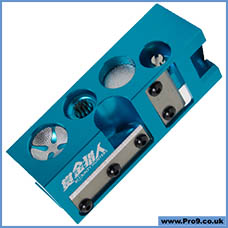
Jump Training Ball
by McDermott
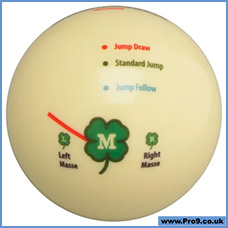
O’Min F2
Radial Pool Cue
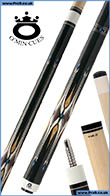
New - Pre-Order!
Mezz Pro Towel
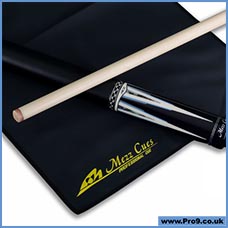
Predator
Centro Shaft
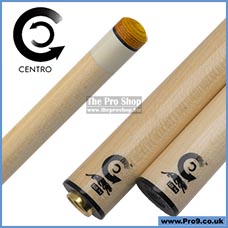
Cue Extensions
- fits Predator
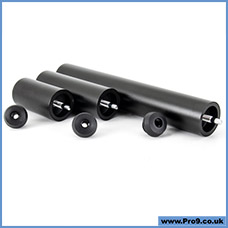
Predator SP2
Adventura Cocobolo
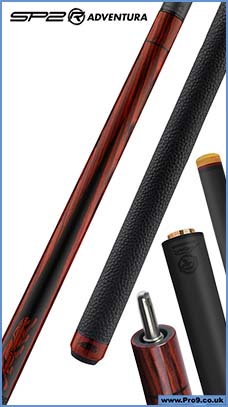
John Barton
Ultimate Rugged
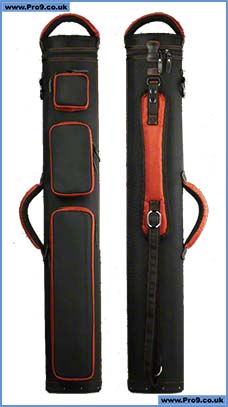
Predator LE
Sang Lee Series 2
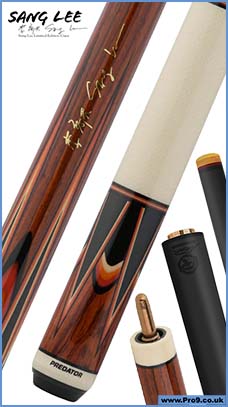
New Tiger Tip
Nitro by Appleton
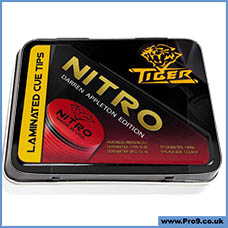
Predator Virtuoso
Ebony/Malachite
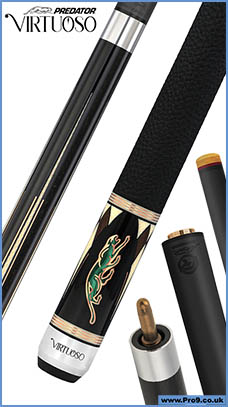
Predator Virtuoso
Cocobolo/Turquoise
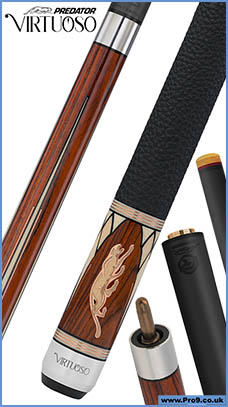
Predator Virtuoso
Maple/Thuya/Turquoise
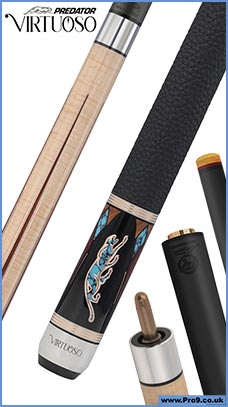
Cuetec Cynergy
SVB Gen 2 White
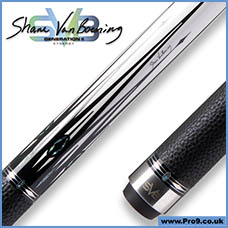
Cuetec Cynergy
SVB Gen 2 Black
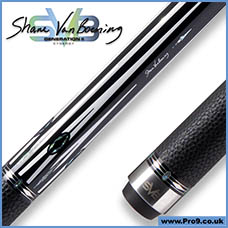
Fury Stinger
Carbon Upgrade
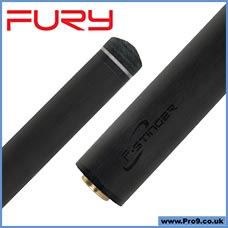
Predator Ball Case
2¼" Ball Size
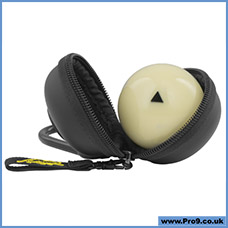
The Golden 8
Aramith 2¼" Ball
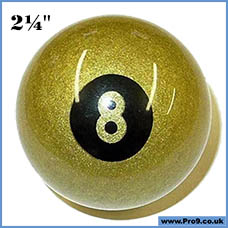
Predator P3
Metallic Grey
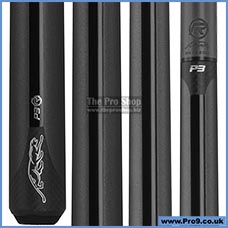
Cuetec AVID
Chroma - Crimson
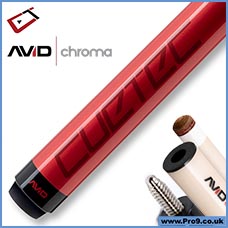
Cuetec AVID
Chroma - Currency
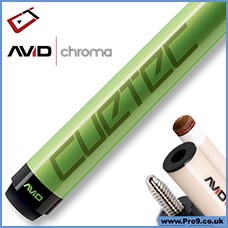
Predator
Shorty - No Wrap

Predator
Shorty + Sport Grip
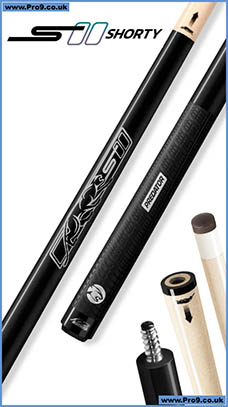
Bulk Ball Sets
For clubs & leagues!
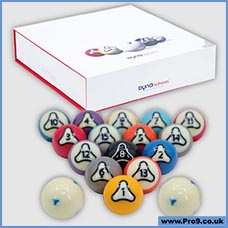
Predator Roadline
Black & Grey 3x6

Magic Rack
Pro Set - Grey
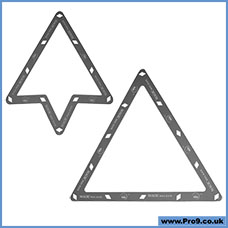
Predator SP2
Red Metallic 1
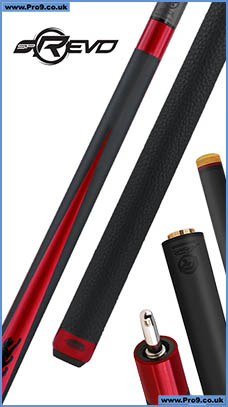
Predator SP2
Red Metallic 2
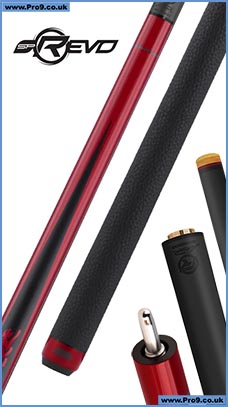
Mosconi Cup
Team USA Ball

Mosconi Cup
Team Europe Ball
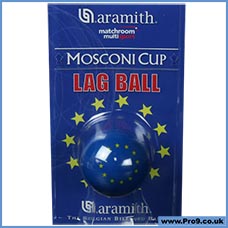
Cuetec AVID
Opt-X Teal

Cuetec AVID
Opt-X Lavender

Tiger
Tip Protector

Mezz Tsubasa
Jump Tip
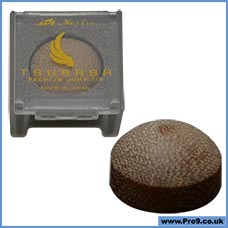
TAOM
V10 - Blue

Cutshots
Perfect Aim Trainer

Super Shot
V8 Mega Bridge
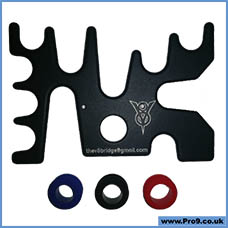
Cuetec Truewood
Mappa Burl

Cuetec Cynergy X
Full Carbon Cue
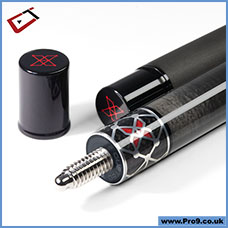
ProPockets
Free post worldwide!
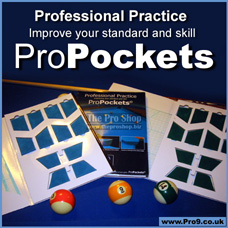
TheProShop.biz
Free Post in Europe!
Order now! |
| | 
Main Menu |  |
 |  |
WORLD RULES OF 5-PIN BILLIARD
(Also known as Italian Billiards)
1997 Edition
CHAPTER I - General regulations
1 - Application of the rules
CHAPTER II - Equipment
11 - Billiard, cushion, cloth
12 - Balls, pins, chalk
13 - Marking of the spots and position lines
14 - Billiard cue, rake
15 - Lighting
CHAPTER III - Goal of the game, the match
21 - Goal of the game
22 - Allocation of the points
23 - Start of the match
24 - Cushion draw
25 - Starting position, game ball
26 - Break during the match
27 - Quit during the match
28 - End of the match, match and set points
CHAPTER IV - Particular prescriptions
41 - Balls in contact
42 - Balls bounding out of the billiard
43 - Fall of the pins
44 - Ball in hand
45 - Foot zone
46 - Indication of the ball
47 - Place of the player
48 - Mark on the billiard
49 - Time limitation of the execution of a stroke
CHAPTER V - Fouls
61 - Fouls
62 - Foul not ascribed to a player
CHAPTER VI - Final clauses
71 - Infringements
72 - Enforcement and annulment
APPENDIX:
1. The castle of the pins
2. Marking of the spots, position lines
3. The pin
4. Jump of the cue-ball
CHAPTER I - GENERAL REGULATIONS
Article 1 - Application of the rules
1. The world rules of 5-pin billiard complete the statutes and regulations of the UMB. They are applicable at all world championships and intercontinental tournaments officially recognized by the UMB.
2. The statutes and other regulations of the UMB are applicable as far as the cases which are not explicitly provided by the present rules are concerned.
The world rules of arbitration are especially applicable in order to allocate the competence to the referee of the match to make a decision as far as the the exceptional cases which are not provided by the regulations are concerned. In this case a notice of the decision will have to be mentioned on the match paper.
3. The cases which are not provided neither by the present rules nor by other regulations of the UMB or the case of force majeure will be regulated by the the official delegate of the UMB or by his substitute after consulting with the official delegate of the organizing federation and the director of the tournament.
CHAPTER II - EQUIPMENT
Article 11 - Billiard, cushion, cloth
1. The billiard is a table which surface is rectangular, completely smooth and horizontal corresponding with the type of the French carom billiard.
2. The bed of the billiard table is made of slate with a minimum thickness of 45 mm or of
any other material approved by the UMB committee.
3. The demarcation of the playing surface is effected by fitting of rubber cushions of 37
mm in height at the front most point of the cushion. An allowance of plus or minus 1 mm
is admitted. It is not allowed that any hole is on the cushion.
4. The size of the free surface of the game is 2.84 m long and 1.42 m wide. An allowance
of plus or minus 5 mm is admitted.
5. The rubber cushions are fastened to the entire length of an external frame of a minimum
width of 12.5 cm in width which surface is entirely smooth and of a homogeneous
colour. Solely a quality concerning the cushions which is recognized and authorized by
the UMB committee can be used.
6. The surface which surrounds the cushions will have indelible marks "diamonds", fixed at
regular distance corresponding with 1/8 of the length of the surface of the game. Neither
the mark of the producer nor any other indication will be allowed to be fastened to the
surface of this frame which surrounds the cushions. Adding of two additional "diamonds"
at all the four corners of the billiard table is allowed.
7. The cloth which covers the billiard must be new and must have a quality and colour
which are admitted by the UMB committee. The required details are published by the
committee at the end of chapter I of the world organization rules. The cloth will have to
cover at most the slate and the cushions. Solely a quality of cloth which is recognized
and authorized by the UMB committee can be used.
8. The distance of the billiard between the floor and the top of the surface which surrounds
the billiard must be between 75 and 80 cm.
9. The billiards meant for an official tournament will be equipped with an electrical heater
eliminating any humidity from the slate and the cloth. This heater equipped with a
thermostat will be switched on from the set up of the billiards and during the whole
competition in order to ensure the best possible rolling.
Article 12 - Balls, pins, chalk
1. The balls consisting of three must be of a material and of colours admitted by the UMB
committee. The required details are published by the committee at the end of chapter I
of the world organization rules.
These balls must be rigorously round and have between 61 and 61.5 cm in diameter. A
ball must be between 205 and 220 grams in weight or must have another weight
agreed by the UMB committee. However, the difference between the heaviest and the
lightest ball should not exceed two grams.
2. The five pins must consist of a material and must have a colour admitted by the UMB
committee. They may either be of one homogeneous colour or four of this pins may be
of one colour and the one placed in the centre may have another colour.
The pins 25 mm in height are round and have 6 mm in diameter on the top, 10 mm at the
widest spot of the lower part and 7 mm on the bottom. (see appendix)
3. The chalk should not excessively soil the surface of the game.
Article 13 - Marking of the spots and position lines
1. The places which must be occupied by the balls and pins either at the beginning of the
match or in its course in so far as the rules specify it are named "spots".
2. The positions of these spots will as fine as possible marked by means of a cross drawn
with chalk, in pencil or with ink. The marking by setting up small rings is forbidden.
3. The position lines are drawn with chalk, in pencil or with ink as fine as possible. The
marking by setting up any object regardless of its kind is only allowed for the ground
lines.
4. The positions of the spots and positions lines are indicated in the appendix.
Article 14 - Billiard cue, rake
1. The balls are set in motion by means of an equipment made of wood or any other
material which is named "billiard cue". The billiard cue either comes with one-piece or
several-pieces. There must a ring fixed at one of the ends of the cue called "leather tip".
The player is only allowed to use the "leather tip" in order to touch the ball. The player
employs one or several cues of his choice and he freely determines its length, weight
and diameter.
2. The player has the right to use a "rake", a small stick made of wood or any other
material to which a small construction is attached at the end and which is determined to
replace the hand in certain position of the body which are difficult to take.
Article 15 - Lighting
World rules of 5-pin billiard
1. The light projected onto the billiard may not be lower than 520 lux on the whole
surface, the measuring instrument is put on the cloth to measure it.
2. The light must not be too strong, either; in order not to blind the players. (blinding starts
at 5,000 lux concerning the direct view)
3. The distance between the source of light and the surface of the game must be at least 1
meter.
4. The hall should not be in complete nightfall, but it will have to be illuminated with at least
50 lux.
CHAPTER III - GOAL OF THE GAME, THE MATCH
Article 21 - Goal of the game
1. The goal of the game consists of obtaining the number of points determined by the
UMB committee. The player who first obtains the distance determined wins the match.
If this limit is exceeded by means of the last stroke the total number of points will be
reduced to that limit.
The limit which must be obtained may either consist of a single distance or of several
sets with an odd number.
2. The players play successively, stroke by stroke.
3. The players receive positive points as far as the stroke is regular and points have been
realized.
No point will be allocated if the execution of the stroke is correct but without realizing
points.
The player committing a foul receives a penalty points which are at the same time
positive points allocated to his opponent.
4. The stroke will be regular and his performer will receive positive points:
a) if the cue-ball touches the object-ball and goes into the pins;
b) if the cue-ball touches the object-ball, then the red ball and forces the object-ball
and/or the red ball to go into the pins;
c) if the cue-ball touches the object-ball which itself touches hereafter the red ball
and it/they forces/force the object-ball and/ or the red ball to go into the pins;
d) if the cue-ball touches the object-ball, then the red ball which is also touched by
the object-ball and it/they forces/force the object-ball and/or the red ball to go
into the pins;
e) if the cue-ball touches the object-ball, then the red ball;
>f) if the cue-ball touches the object-ball and which touches itself hereafter the red
ball;
g) if the cue-ball touches the object-ball then the red ball and if by means of the
same stroke the object-ball touches also the red ball.
5. The stroke is regular but does not carry any point if the player does not touch the object ball
and if this latter does not touch neither the pins nor the red ball during the execution
of his stroke.
6. The stroke is not regular and carries penalty points concerning the performer which are
at the same time positive points allocated to the opponent:
a) if he does not touch the object-ball;
b) if he touches the red ball and/or knocks over one or several pins before touching
the object-ball;
c) if his ball also knocks the pins over after having touched the object-ball even if
the object-ball and/or the red ball also knocks the pins over;
d) if he plays with the wrong ball;
e) if he commits one or the other of the fouls mentioned in the corresponding
chapter so that positive points have or have not also been realized by means of
the affected stroke.
Article 22 - Allocation of the points
1. The value of the points and pins is the following:
a) each outer pin has a value of 2 points;
b) the central pin has a value of 4 points;
c) if the central pin is solely knocked over regardless of the fact whether the castle
of the pins is complete or not, it has a value of 8 points.
2. The value of the points of the cannons is the following:
a) the cannon of the object-ball and of the red ball with the cue-ball it has a value
of 4 points ;
b) the cannon by "casin" (as far as the cue-ball after touching the object-ball forces
it to touch the red ball) it has a value of 3 points.
Only the first realization of the above-mentioned regulations is taken into
consideration in order to allocate the number of cannon points.
3. The pin points and the cannon points are add up in order to receive the total number of
points realized with the same stroke.
4. The value of penalty points is indicated in the corresponding chapter.
5. If positive points and penalty points are realized with the same stroke the total amount
of all the obtained points will be allocated to the opponent.
6. If the referee announces that the stroke is valid and whether positive points have been
realized or not he announces according to the rules of arbitration.
He analogously proceeds in the case of the allocation of penalty points, the indicated
number is at the same time the number of positive points being in favour of the
opponent of the player having committed the foul.
Article 23 - Beginning of the match
The match begins as soon as the referee has placed the balls in order to execute the
starting stroke.
Article 24 - Cushion draw
1. The referee places the two white balls (or the coloured ones) on the starting line, on both
sides of the second lowest spot approximately 30 cm from each long cushion and the red
ball on the second highest spot. He also places the pins at the centre of the billiard as
indicated in the appendix.
As far as the cushion draw is concerned the referee places the spot or coloured ball on
the left side and the other white ball on the right side. If the two players insist on playing
with the same ball the referee will draw lots.
2. Once the balls and pins are placed the players draw the beginning at the top cushion.
The two balls must be in motion before one of them reaches the top cushion. If this is
not the case the draw will be repeated. The player who causes two times such a
repetition loses the choice to begin. It is not admitted to effect the cushion draw by a
stand-in.
3. If the balls have touched each other on their way the faulty player (outside his half of the
billiard) will lose the choice to begin.
4. If the balls have touched each other on their way and if it is impossible to determine the
faulty player or if the balls are at rest at the same distance from the bottom cushion the
referee arranges that the cushion draw is repeated.
5. If the ball of a player touches the red ball and/or one or several pins the faulty player
will lose the choice to begin.
6. The player whose ball is at rest nearest to the bottom cushion has the choice to start the
match or to cause the opponent to start.
Article 25 - Starting position, cue-ball
1. The balls are placed by the referee:
a) the white ball of the player who must execute the starting stroke is freely placed
in the lower part of the billiard;
b) the object-ball, the second white ball spot or coloured is placed on the top spot
near to the upper short cushion;
c) the red ball is placed on the second highest spot in the centre of the upper part of
the billiard.
(see appendix)
2. The player who must execute the first stroke uses the white ball which he places solely
using the cue any way he wants in the lower part of the billiard whereby it is not allowed
that any part of this ball exceeds the central line of the billiard.
3. After having defined the position of his ball the player must play it so that it touches the
object-ball (white spot or coloured).
4.He is authorized to mark points during the execution of the starting stroke.
5. Once the starting stroke has been played the opponent continues the match with the
white spot or coloured ball.
6. At the moment where the beginning is drawn the player's foot/feet touching the floor
must be entirely within the lines drawn on the floor.
7. In the case of a match with sets there is an alteration of the player starting the set
regardless of the number of sets which have to be played.
8. Regardless of the mechanism of the match the players keep the same ball for the whole
duration of the match.
9. In case that a player plays with the wrong ball without the referee noticing and counting
this mistake ant the opponent does the same since he has been misled by the previous
stroke the achieved points are normally counted if this situation now repeats or not up
till the moment in which the mistake will be detected. In this moment the referee
exchanges the location of the balls on the billiard table according to the achieved
position without charging the one or other player a penalty point.
Article 26 - Break during the match
A break of 5 minutes is made at the middle of the match.
The middle of the match is at the moment where a player reaches or exceeds half of the
determined distance at the end of his inning.
However, the break will only be made if the match lasts at least 45 minutes as far as a
player reaches half of the distance and if at that moment he does not reach 3/4 of the
distance.
In the case of a match with 3 sets the break can only be made after the second set. In the
case of a match with 5 sets the break can be made after the second set and/or after the fourth
set.
On the occasion of the break the referee can possibly be changed.
Article 27 - Quit during the match
1. A player who quits his place during the match without being authorized by the referee
loses the match by this gesture. The case of force majeure occurring during the
championship will have to be assessed by the official delegate of the UMB or by his
substitute.
2. Each player who refuses to continue the match after the referee's demand will be
excluded from the championship.
Article 28 - End of the match, match and set points
1. A match consists of a certain number of points (distance of the game) which must be
effected and which is determined by the UMB committee.
2. Each match which has started must be played up to the last point. A match is finished as
soon as the referee announces "good" the last point even if after the stroke it is stated
that the player did not effect the number of required points.
3. In the case of a match played with sets the following regulations are further applicable:
a) as soon as one of the players reaches the number of points determined for the
set, it will be finished and he will be its winner;
b) as soon as one of the player has reached the necessary number of sets (2 for a
match with 3 sets) he will be the winner of the match and it will immediately be
interrupted.
4. In the case of a match with three sets the match and set points are allocated at the end of the match as follows:
a) - 2 to 0 = to the winner: - 1 match point and
3 set points
to the loser: - 0 match points and
0 set points
Article 28 (continuation)
b) - 2 to 1 = to the winner: - 1 match point and
World rules of 5-pin billiard
2 set points
to the loser: - 0 match points
1 set point
5. In the case of a match with five sets the match and set points are allocated at the end of
the match as follows:
a) - 3 to 0 = to the winner: - 1 match point and
5 set points
to the loser: - 0 match points and
0 set points
b) - 3 to 1 = to the winner: - 1 match point and
4 set points
to the loser: - 0 match points and
1 set point
c) - 3 to 2 = to the winner: - 1 match point and
3 set points
to the loser: - 0 match points and
2 set points
CHAPTER IV - PARTICULAR PRESCRIPTIONS
Article 41 - Balls in contact
1. As soon as the cue-ball is in contact with one of the other two balls or with both the
player does not have the right to play directly this or these balls.
2. As soon as the cue-ball is in contact with a cushion the player does not have the right to
play directly this cushion.
3. To execute the strokes deriving from the points 1. and 2. above, the player must play in
order to detach from this position by means of a ricochet or mass� stroke in order not to
force the ball in contact to move. It will not be a foul if the ball in contact solely moves
on account of the fact that it loses its hold which it possibly got from the cue-ball.
4. In case that it is impossible to execute a stroke without making a mistake the player
greely chooses if he only wants to touch the cue-ball or if he wants to execute a stroke in
order to achieve the best possible defensive position.
Article 42 - Balls bounding out of the billiard
1. It is considered that a ball is bounding out of the billiard as soon as it drops out of the
frame or as soon as it touches the material of the frame.
2. The fact that a ball is caused to bound out of the billiard represents a foul and is treated
as such a foul.
3. As soon as one or several balls bound out of the billiard only the bounding ball or the
bounding balls are once again placed by the referee for a stroke "ball in hand" as
follows:
a) If the ball leaving the billiard is that of the player who is going to play, the referee places it on the spot near the short cushion in the part of the billiard which opposes that where the ball of the player who will have to execute the stroke "ball in hand". If the spot which corresponds to the ball is occupied or hidden the ball is placed on the corresponding spot on the other side of the billiard table.
b) If the ball leaving the billiard is that of the opponent, the referee olaces it for a stroke "ball in hand" in the part of the billiard opposing that one where the ball of the player who is going to execute the stroke is placed.
c) If the ball leaving the billiard is the red ball the referee places it on the initial starting position on the second highest spot. If the spot which corresponds to the ball is occupied or hidden the ball is placed on the corresponding spot on the other side of the billiard table. Then, the referee places the cue-ball for a stroke "ball in hand" in the part of the billiard opposing that where the ball of the player who is going to execute the stroke is placed.
d) To execute the points a) to c) above the affected player also profits from the
possibilities of article 44.5 concerning "ball in hand".
Article 43 - Fall of the pins
1. A pin is considered to be fallen as soon as its basis has completely lost the contact with
the cloth.
2. A knocked over pin which would once again find its initial position, on its own or not,
nevertheless, is considered to be fallen and its points are counted.
3. Subject to the points 5 and 7 below a pin is also considered to be fallen if it is knocked
over by another pin and the achieved points are regularly added to the total amount of
the stroke.
4. A pin is not considered to be fallen if it is partly or completely shifted from its position
and if its basis keeps contact with the cloth.
The referee puts it back on its place as follows before the next stroke is executed :
a) In case that at the end of the stroke the named pin does not touch any ball and
its original place is free it will be put back on this place. In case that its original
place is occupied by any of the balls it will be kept outside of the game up till
the end of the stroke which will take off its place.
b) In case that at the end of the stroke the named pin touches any of the balls it
remains in this position regardless of its original place now being free or
occupied this up till a position according to the above point a) will be achieved.
As long as it is in a position as described in this section it is regarded as being
in the game and the achieved points will be regularly counted.
5. If a pin leaning aginst the cue-ball falls at the moment of the attack of the cue-ball on the
direction opposed to that of the hold it will not be considerd to be fallen. There is not a
foul and if it is possible the referee immediately removes it from the game. If this is not
possible, the points possibly realized by that pin, regardless whether they are positive or
negative, will not be taken into consideration according to point 3 above.
6. If a pin leaning against a ball different from that of the cue-ball falls at the moment
where the holding ball is moved into the direction opposing that of the hold, it will be
considered to be fallen.
7. If a pin falls on its own or on account of a reason which the player thinks to be strange
the referee places it once again on its position if possible even during the execution of
the stroke. Otherwise, it is not considered to be knocked over and the pointspossibly
realized by that pin, regardless whether they are positive or negative, will not be taken
into consideration according to point 3 above.
8. If the position of one or several pins is entirely or partially occupied by a ball the referee
will remove the affected balls and the stroke will be executed with the remaining pins.
The removed pins do not count and they will be placed once again as soon as possible,
however, for the following stroke at the latest.
Article 44 - Ball in hand
1. As soon as a foul according to article 61.3 following is committed the next player profits
from a position called "ball in hand" which he executes with his own ball.
2. At the end of the faulty stroke the referee takes the ball of the player who must execute
the following stroke in his hand and places it of his own choice in the part of the billiard
opposing that where the ball of the player who is going to execute the stroke placed.
This ball keeps its position.
3. Then the affected player takes his ball placed by the referee which he then places
according to his own choice by solely using the cue in this part of the billiard whereby it
is not allowed that any part of this ball exceeds the central line of the billiard.
4. If the object-ball can exactly be placed astride the central line, the cue-ball will be
placed in the lower part of the billiard as for the starting stroke.
5. The player who must execute the stroke "ball in hand" decides on his own either to play
it on the obtained position according to the above-mentionned regulations or to demand
that the referee places only the object-ball on its initial starting position. If this position
is occupied by the red ball the object-ball is placed on the corresponding spot in the
other part of the billiard in this case the cue-ball is placed in the other half of the billiard.
6. If the player who must execute a stroke "ball in hand" touches the cue-ball before the
referee has placed it, it will be a foul and he will have to quit immediately, the opponent
will also have a position "ball in hand".
7. At the moment of the execution of "ball in hand" the player's foot or feet touching the
floor must entirely be within the limits drawn on the floor.
Article 45 - Foot zone
On the two sides of the billiard where the players execute either the starting stroke or the
stroke "ball in hand" two lines are drawn on the floor 10 cm from the external edges of
the frame of the long cushions of the billiard table. At the moment of the abovementionned
executions the players' feet touching the floor must obligatorily be entirely
within the drawn limits.
Article 46 - Indication of the balls
World rules of 5-pin billiard
On demand of the player the referee is obliged to indicate him his ball. The indicator
board will have to be equiped with a device indicating at any time the player playing
with the spot or coloured ball.
Article 47 - Place of the player
The player who is not at the billiard must attend his turn, standing or sitting at the place
provided for it, abstaining from any gesture or noise which could disturb his opponent.
These places will be a chair and/or a limit drawn on the floor which must not be exceeded.
Article 48 - Marks on the billiard
It is forbidden to draw visible marking points on the playing surface, on the cushion or
on the frame.
Article 49 - Time limitation of the execution of a stroke
1. The player has at the most 40 seconds at his disposal for the execution of one stroke.
The time is measured from the moment where the referee has put back the pins and/or
the balls on their places or from the moment where the balls stand still after the previous
stroke.
2. In case that during these 40 seconds the player has not executed his stroke he is charged
2 penalty points which are credited to the opponent. From this moment on he has still a
final period of 20 seconds in order to execute his stroke. In case that the stroke is not
executed during this second period the player is again charger 2 penalty points which
are credited to the opponent. In this situation the player does not have any right anymore
to execute his stroke and the opponent takes on the game in the way the balls and pins are lying.
CHAPTER V - FOULS
Article 61 - Fouls
1. Fouls causing penalty for the affected player possibly in addition to other positive points which could have been realized with the same stroke. In the case of a foul all obtained points are allocated to the opponent of the player who committed the foul. If the player commits several fouls during the execution of his stroke the value of points of each foul will be added up.
2. There is a foul which is only penalized to the points of pins and possibly of cannons without causing a stroke "ball in hand" and without other complementary penalty:
- if the cue-ball goes into the pins after having correctly touched the object-ball
- indicated by "pins". There is a foul of the stroke "ball in hand" for the player who has his turn in the below mentionned cases.
All these fouls carry a 2 point penalty, possibly plus the points obtained by the pins and/or by the "red ball".
3. If the referee states that the player does not play with his ball - indicated by "wrong ball".
4. If the player touches the red ball before having touched the object-ball -indicated by "red ball". Having touched the red ball the complementary penalty of the "red ball" consists of 2 points. (identical with the minimum value of a pin)
5. If the player touches one or several pins before having touched the object-ball - indicated by "pins".
6. If the player does not touch or incorrectly touches the object-ball - indicated by "objectball".
7. If one or several balls bound out of the billiard during the execution of the stroke - indicated by "ball outside". (the 2 point penalty is applicable regardless of the number of balls bounding out of the billiard)
8. If the player plays before the three balls are at rest - indicated by "balls in motion".
9. If the player uses another part of the cue than with the leather tip in order to play - indicated by "leather tip".
10. If the player touches his ball more than once during the attack of his ball in order to execute the stroke - indicated by "touched".
11. If the player touches or shifts a ball or a pin in order to remove a strange object attached to them instead of demanding that the referee does it - indicated by "touched".
12. If the players shifts a ball or a pin by means of a direct or indirect contact without the shifting being the direct consequence of the execution of the stroke - indicated by "touched".
13. If the player directly plays a ball or a cushion being in direct contact with the cue-ball without having detached this latter by means of a detached stroke in advance - indicated by " ball in contact".
14. If at the moment where the player touches his ball he does not touch the floor with at least one foot or if during the execution of the starting stroke or of a stroke "ball in hand" he leaves the determined limits with the entire or part of a foot or feet - indicated by "foot". The use of special shoes is not admitted.
15. If on the position of the cue-ball the player the cue-ball in order to execute the starting stroke or a stroke "ball in hand" the cue-ball with another object than the cue and/or if he touches it before the referee has placed it - indicated by "touched".
16. If the cue-ball jumps above the pins and/or the red ball before having touched the object-ball - indicated by "jump of the ball".
Remark: on condition that no pin is knocked over the passage between the pins by normal rolling of the cue-ball on the billiard is not a foul but a valid stroke.
17. If the player, except the attack of his ball in order to execute the stroke, touches one of
the balls or the pins with a part of the cue, with the hand or another object - indicated by "touched".
18. If the player pushes through - indicated by "pushed through". There is a pushing
through:
- as soon as the leather tip comes several times into contact with the ball set in motion;
- as soon as the leather tip is still in contact with the cue-ball at the moment where it touches the second ball or the cushion.
Article 62 - Foul not ascribed to a player
Each foul committed by a third person, including the referee which causes compulsory shifting of the balls or the pins is not ascribed to the player. In this case the balls and the pins are once again placed by the referee as exactly as possible on the position which they occupied or would have occupied. If it is impossible to determine the referee may decide to place them once again at the initial position of the starting stroke.
CHAPTER VI - FINAL CLAUSES
Article 71 - Infringements
Any infringement of the present rules will be treated according to the statutory regulations relating to disciplinary proceedings.
Article 72 - Enforcement and annulment
1. The present regulation is established by the UMB committee, according to the proposals
of the UMB-commission for the development of the 5-pin-billiard ant the "Boccette" and on the basis of the statutory regulations taking effect. It is applicable since August
1st 1997 and since that day it annuls all previous and contrary regulations.
2. The affiliated federations, the recognized confederations, the associated members, as well as the contractual partner of the UMB are committed to respect them and cause them to be respected.
For more information on 5 pin billiards please visit...
www.umb.org
| 
|

PRO9 has established an outstanding reputation as Europes No.1 source for information on American Pool in the UK and Europe.
Upcoming tournament details, prompt match reporting, exclusive images by talented photographers, superb articles by expert pundits, active pool related forums, player profiles and a very sophisticated membership - basically, an incredible information resource for the American style game in Europe.
Since it launched, PRO9 has become compulsory reading, not just for the UKs pool players, but to hundreds and thousands of pool obsessives from around the world every single day.
PRO9s members range from professional pool players, cue-sports enthusiasts, club managers, tournament organisers, pool fans and aficionados, as well as various "movers and shakers" in the cue-sports field, including entrepreneurs in the wholesale and retail sector, as well as magazine editors and television sports promoters.
Growing more and more popular every single year, PRO9 is the best placed vehicle for the promotion of your pool club, billiards brand, associated products, services and opportunities in the truly massive pan-European billiard market.
If you qre reading this, you should check out www.Pro9.co.uk for yourself!
Please use these logos and text in your links to www.Pro9.co.uk - thank you.

Forum rules: No advertising, no links to businesses/shops/eBay, no swearing, respect our sponsors and each other, no hate!

Flag counter installed Monday 11 November 2013
All logos and trademarks in this site are property of their respective owner.
The comments are property of their posters, all the rest © 2006-2020 by Big Dave at Pro9.co.uk.
This web site was made with myPHPNuke, a web portal system written in PHP.
myPHPNuke is Free Software released under the GNU/GPL license.
Anyone read this bit down here???
You can syndicate our news using the file
backend.php or ultramode.txt
|
|
|
|
|
Page took 0.063713 seconds to load.
|







